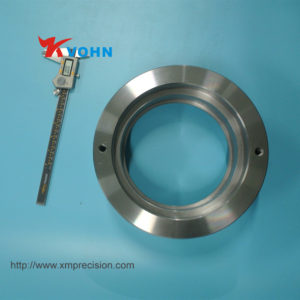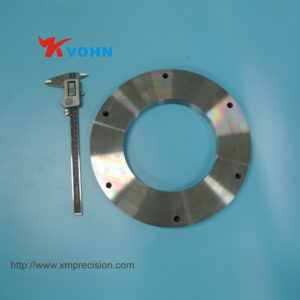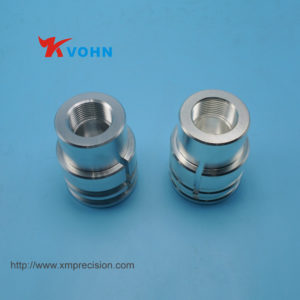Regardless of six sigma codes management, engineering quality, scientific and technological R&D, etc., trial design is a method we commonly use to solve problems. Its application can be said to cover all industries. The trial design started with the research in agriculture and forestry. Therefore, many of our experimental design terms originate from this. BLOCK, the meaning of the district group, is the original meaning of the four squares of the field. As the research deepens, it is gradually applied. Machinery, pharmaceuticals, chemicals and other fields. There are many methods for experimental design. Based on the specific problem model and purpose, we can select appropriate design methods such as hybrid design, curved surface design, split-zone design, Taguchi design, uniform design, and so on. The trial design abandons the gradual adjustment of individual factors in the past and avoids ignoring interactions and other issues, thus more systematically and effectively addressing the indicators we are concerned about. Different from the initial trial design application of agriculture and forestry, we can adopt gradual methods to adopt trial design schemes in many industries without expecting to be in one step. jobshop
DOE test 7 steps
The first step: determine the goal
Through the use of tools such as control charts, failure analysis, cause and effect analysis, failure analysis, and capability analysis, or the reflection of direct practical work, we will come up with some key problems. It reflects that an index or parameter cannot satisfy our Demand, but for such a problem, we may not be able to solve it with some simple methods. At this time, we may think of experimental design. To solve the problem of using experimental design, we must first define the purpose of the test, that is, what kind of problem is solved, what kind of harm the problem brings to us, and whether there is enough reason to support the operation of the experimental design method. Knowing that experimental design must spend more resources to carry out, and for production-oriented enterprises, the trial design will disrupt the original order of production stability, so determining the purpose of the experiment and the necessity of testing are the primary tasks. With the determination of the test objectives, we must also define the test indicators and accepted specifications so that our tests can have direction and test metrics for successful tests. The indicators and specifications here are extensions and specifics of the purpose of the experiment. That is, the focus of the problem is solved. The achievement of the indicator can mean the solution of the problem. jobshop
The second step: analysis process
Focusing on the process and the habits that we should have, just as many of our companies do the same level of comparison, there is often a misunderstanding that focusing only on the point of interest and ignoring the contrast of process features, experimental design The deployment must also be based on a deep analysis of the process. The emergence of any problem has its own reasons. The quality of things, the variation of parameters, the lack of features, etc. all have this feature, and many reasons generally exist in the process of generating problems. The definition of the process is very critical, too short a process may abandon the obvious reasons, long process will result in the waste of resources. We have a lot of ways to start the process, but one thing must be done is to list the possible factors as exhaustively detailed. The detailed factors come from the detailed decomposition of each step, confirming its input and output. In fact, the analysis and understanding of the process is to improve the people’s understanding of the problem, because not everyone can master the issues we are concerned about. The output of this step enables our improvers to understand where the possible causes of the problem lie. Although it is not possible to determine which is important, we must at least identify a general direction. jobshop
Step 3: Screening Factors
A thorough analysis of the process is that we have invaluable information, that is, factors that may affect our focus on indicators. But which one is important? We know that a thorough experimental analysis of some fundamentally insignificant or minor influencing factors is actually a waste, and it may also lead to experimental errors. Therefore, the screening of possible factors is necessary. At this time, we do not need to confirm the problems of interaction, higher-order effects, etc. Our purpose is to confirm which factors have significant effects. We can use some low-resolution two-level test or special screening test to complete this task, and the test cost will be minimal. And for the completion of this step, we can apply some historical data or completely reliable empirical theory analysis to reduce our experimental factors. Of course, it is important to note that as long as there is little doubt about these data or analysis, in order to test The result is reliable and you can give up. The results of screening factors make us master the main factors affecting the indicators. This step is particularly critical, and often we come through a complete empirical analysis in reality, even with a possible attitude. jobshop
Step 4: Fast approach
We have found the key factors through screening experiments. At the same time, the screening experiment also contains some very important information, that is, the trend of the influence of major factors on the indicators. This is the information that we must make full use of. It can help us find the test purpose quickly. The possible area, although not very certain, we have narrowed the encirclement. At this time, we generally use the rapid rise (decrease) method in experimental design, which is based on the trend of the main factors revealed by the screening test to determine some levels, and conduct tests. The purpose of the test is as if we are looking for criminals to reduce the suspects. One of the conclusions we have reached is that the best point of our improvement is within the level of the ultimate reflection of the factors. We are one step closer to success.
Step 5: Factorial experiment
In the screening test, we did not emphasize the influence of interactions between factors, but gave the main influencing factors, and the approach of rapid approach allowed us to determine the approximate level of the major factors. Then we can further Main effects, interactions, and higher-order effects of metrics. These tests were selected within a rapidly approaching horizontal interval. Therefore, they have a significant effect on the final optimization. The factorization experiment mainly selects the apex and center of the geometry of each factor. Click here to complete this test structure, which can help us determine whether there are interactions or interactions with the index, whether there are higher-order effects or higher-order effects. The final test is to test whether these effects are through analysis of variance. Significantly, at the same time, it is also a verification of past screenings and rapid proximity tests. However, we should not describe the detailed relationship between indicators and main effects on the basis of such tests, because for the selection of three levels, the test efficacy will be Poor possibilities. jobshop
Step Six: Regression Test
In the factorial experiment, we identified the main impact factors between all factors and indicators, but considering the efficacy issues, we need to further arrange some tests to finally determine the optimal impact level of the factors. At this time, the trial is just an analysis. Due to the supplementation of test points of the test, that is, test data of factorial test can also be used, only in order to finally optimize our indicators, or to effectively and comprehensively construct factors and levels of corresponding curved surfaces and contours, we add some tests. Click here to complete this task. The test point is generally selected based on the rotation of the regression test, and its level should be based on reasonable settings in terms of efficacy, number of factors, center points, etc. to ensure the reliability and validity of the regression model. After the completion of these tests, we can analyze and establish the regression model between the factors and indicators, and we can determine the final factor level setting through optimization. Of course, to be on the safe side, we finally performed some verification tests to verify our results after getting the best combination of parameters. jobshop
Step 7: Robust Design
We know that the purpose of experimental design is to achieve the goal of controlling indicators by setting some key factors that we can regulate. Because we cannot directly control indicators, experimental design provides such possibilities and approaches, but in reality There is a class of such factors in it, which has the same significant effect on the indicators, but it is difficult to ensure that its influence is optimal through human control. Such factors are generally called noise factors, and its existence often makes us The results of the trials have fallen short of success. Therefore, besides trying to control them, a robust design approach can be used, in order to minimize the impact of these factors and thus ensure the high performance of the indicators. In fact, these factors are ubiquitous. For example, the roads on which our cars are traveling cannot be guaranteed to be on high roads. How can we design high performance for some poor roads? At this time, we will choose some anti-interference factors to mitigate the influence of interference factors. This is the intention and approach of robust design. Usually, we will often use it in the design and development stage, but sometimes it will be exposed as the problem arises, but we will ask a question. Will the re-selection of the main factor level bring about oscillation and deterioration of the indicator? This is entirely possible, but we can use EVOP and other ways to re-set to ensure that the effect of changes in the output.
summary:
1. The trial design requires the investment of cost. We must determine the necessity of the experiment and select the optimal design. jobshop
2. The selection of the level may directly affect the results of the experimental design, and should be carefully selected. Finally, there is support for professional knowledge and historical data.
3. Make use of some historical data as much as possible, and extract information that is useful for our experiment after confirming the reliability to minimize test investment and shorten the test period.
4. The experimental design does not provide a solution to all the problems. The limitations in reality have verified this point. We must fully consider the ways to solve problems and select the most effective and economical solution.
5. Pay attention to the full analysis process. Don’t miss the key factors. Don’t be influenced by the impossibility of some empirical conclusions.
6. In addition to the factors involved in the experimental design, it is necessary to try to ensure that all environmental factors are stable and consistent with reality. This is often not possible. We can use randomization and blockage to avoid as much as possible. jobshop
7. Pay attention to the verification and control of the results. Do not rely on the results.
8. As far as possible to ensure the simulation of the test, to avoid some of the ideal test environment, such as the laboratory, the ideal unrealistic environment is that the test may not have any effect.
9. The test designer should pay attention to the test process and ensure the complete execution of the test intention and plan.
10. If it is possible to achieve a one-step trial design, then do not hesitate to start it, the above seven steps are only for ordinary situations. jobshop
CNC Machining Service & CNC Machining parts

standard automation

machine automation

china cnc precision machining
